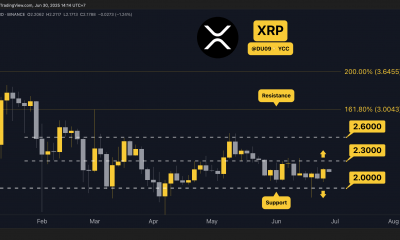Uncategorized
Warren Buffett says inflation ‘swindles almost everybody’ — here’s 10 ways his frugal habits can help you save money


Warren Buffett might have billions of dollars to his name, but unlike other celebrities and financial gurus, he prefers to live life simply.
The investing icon practices what he preaches when it comes to financial discipline, saving and paying off debt.
That pays off during times of financial trouble like this. Consider what Buffett had to say during Berkshire Hathaway’s annual shareholder meeting in May, when he acknowledged inflation was already one of the economy’s biggest problems.
Asked whether inflation “swindles equity investors,” he replied: “Inflation swindles the bond investor, too. It swindles the person who keeps their cash under their mattress. It swindles almost everybody.”
When one of the world’s most successful investors says it’s hard to come out on top in an environment like this, it’s probably a good time to apply some well-tested strategies to tighten your belt. Here are nine ways Buffett’s frugality can help you save and spend wisely.
Don’t miss
1. He lives in the same home he bought back in 1958

While many billionaires bulk up on expensive real estate, Buffett originally paid $31,500 for his Omaha, Nebraska, home — that’s about $318,600 in today’s dollars — and he’s lived there for over 60 years.
His home is by no means tiny, however. The 6,570-square-foot, five-bedroom house has had plenty of renovations and additions over the decades and is worth about $1 million today. It’s also protected by fences and security cameras.
Buffett has no plans to move out, calling the house “the third best investment I ever made” in a 2010 letter to Berkshire Hathaway’s shareholders.
2. He rarely takes out loans
Buffett’s one-and-only mortgage was on a vacation home in Laguna Beach, California, that he purchased in 1971, although he certainly had the cash to afford the $150,000-listed seaside property.
He told CNBC that he took out the 30-year mortgage loan because “I thought I could probably do better with the money than have it be an all-equity purchase of the house.”
He decided to use the extra cash on hand for shares in Berkshire Hathaway — the company that brought him billions.
3. He buys breakfast cheap

While Buffett could simply have a personal chef cook him a gourmet breakfast, he often grabs Mickey D’s on his way to work. He says he doesn’t like to spend more than $3.17 on his morning meal.
“When I’m not feeling quite so prosperous, I might go with the $2.61, which is two sausage patties, and then I put them together and pour myself a Coke,” he says in HBO’s 2017 documentary Becoming Warren Buffett.
He continues: “$3.17 is a bacon, egg and cheese biscuit, but the market’s down this morning, so I’ll pass up the $3.17 and go with the $2.95.”
4. He doesn’t splurge on brands
Buffett doesn’t much care for designer suits or the latest iPhone model — he relied on his $20 flip phone for years before swapping it out for an Apple smartphone in 2020.
The Oracle of Omaha avoids unnecessary spending and once said, “Do not save what is left after spending, but spend what is left after saving.”
5. He doesn’t invest with borrowed money (anymore)
“I’ve never borrowed a significant amount of money in my life. Never. Never will. I’ve got no interest in it,” he told students at Notre Dame in 1991.
Although a young Buffett once borrowed 25% of his net wealth to buy shares, he warns investors against repeating the same mistake.
Even skilled stock traders will tell you borrowing to invest can be risky.
6. He buys marked-down cars

Many billionaires and millionaires keep a collection of flashy sports cars and vintage models in their garages, but Buffett allegedly prefers fixed-up automobiles he can acquire at reduced prices.
He upgraded from his 2006 Cadillac DTS to a Cadillac XTS for just $45,000 in 2014.
“The truth is, I only drive about 3,500 miles a year, so I will buy a new car very infrequently,” he told Forbes.
7. He finds creative ways to save
When Buffett’s first child was born, he converted a dresser drawer into a bassinet. For his second, he borrowed a crib.
“If you buy things you don’t need, you will soon sell things you need,” the billionaire says.
Take a good, hard look at your purchases and figure out where you can cut down.
8. He does what he loves

Buffett credits some of his success to his passion for investing.
“You have to love something to do well at it,” he says, urging people to take the jobs they love instead of positions that look good on your resume.
Even if you can’t quit your full-time job to focus on the things you truly enjoy, you can focus on affordable hobbies. Buffett himself enjoys card games and playing the ukulele.
9. He uses cash, not credit
While most of us prefer the convenience of a credit card for our everyday purchases, Buffett uses hard cash.
He told Yahoo Finance in 2019 that he uses cash “98% of the time. If I’m in a restaurant, I’ll always pay cash. It’s just easier.”
While the method may sound a bit old school, relying less on your credit card can stop you from spending money you don’t have.
Using most of your available credit — or worse, falling behind on your monthly payments — damages your credit score. If you’re struggling to pay off your credit card debt, you might consider bundling it into a debt consolidation loan with a lower interest rate.
10. He still clips coupons

Buffett’s a sucker for a good deal and once treated buddy and fellow billionaire Bill Gates to a meal at his favorite fast-food restaurant with — yes — coupons.
“Remember the laugh we had when we traveled together to Hong Kong and decided to get lunch at McDonald’s? You offered to pay, dug into your pocket, and pulled out … coupons!” Gates wrote in a 2017 annual letter.
“Melinda just found this photo of me and ‘the big spender.’ It reminded us how much you value a good deal.”
What to read next
Get the latest personal finance news sent straight to your inbox with the MoneyWise newsletter
A TikToker paid off $17,000 in credit card debt by ‘cash stuffing’ — can it work for you?
Bill Gates just won legal approval to buy 2,100 acres of North Dakota farmland worth $13.5M — and people are ‘livid’
This article provides information only and should not be construed as advice. It is provided without warranty of any kind.
Uncategorized
BofA Securities maintains Amazon.com at ‘buy’ with a price target of $154.00
Uncategorized
Six people in critical condition, one still missing after Paris blast – prosecutor

5/5
© Reuters. French firefighters and rescue forces work after several buildings on fire following a gas explosion in the fifth arrondissement of Paris, France, June 21, 2023. REUTERS/Gonzalo Fuentes
2/5
PARIS (Reuters) – Six people remained in a critical condition and one person was believed still missing on Thursday, one day after a blast ripped through a street near Paris’ historic Latin Quarter, the city’s public prosecution office said. “These figures may still change,” prosecutor Maylis De Roeck told Reuters in a text message, adding that around 50 people had been injured in the blast, which set buildings ablaze and caused the front of one to collapse onto the street. Of two people initially believed missing, one has been found in hospital and is being taken care of, the prosecutor said, adding: “Searches are ongoing to find the second person.” Authorities have not yet said what caused the explosion, which witnesses said had followed a strong smell of gas at the site. The explosion led to scenes of chaos and destruction in the historic Rue Saint Jacques, which runs from the Notre-Dame de Paris Cathedral to the Sorbonne University, just as people were heading home from work. It also destroyed the facade of a building housing the Paris American Academy design school popular with foreign students. Florence Berthout, mayor of the Paris district where the blast occurred, said 12 students who should have been in the academy’s classrooms at the time had fortunately gone to visit an exhibition with their teacher.
“Otherwise the (death toll) could have been absolutely horrific,” Berthout told BFM TV. She said three children who had been passing by at the time were among the injured, although their lives were not in danger.
Uncategorized
4 big analyst cuts: Alcoa & DigitalOcean shares drop on downgrades

© Reuters.
Here is your Pro Recap of the biggest analyst cuts you may have missed since yesterday: downgrades at Alcoa, DigitalOcean, Teleflex, and Xcel Energy.InvestingPro subscribers got this news in rapid fire. Never be left in the dust again.Alcoa stock drops on Morgan Stanley downgrade Alcoa (NYSE:) shares fell more than 3% pre-market today after Morgan Stanley downgraded the company to Underweight from Equalweight and cut its price target to $33.00 from $43.00, as reported in real time on InvestingPro.The firm sees a significant decline in consensus estimates, and as negative earnings revisions materialize, it believes the stock will face downward pressure and underperform.The analyst’s estimates for EBITDA in Q2, 2023, and 2024 are substantially lower than the consensus. The stock is currently trading above its historical average. The firm said its downward revisions in earnings estimates and price target are attributed to the company’s high operating leverage to aluminum prices.DigitalOcean stock plunges on downgradePiper Sandler downgraded DigitalOcean (NYSE:) to Underweight from Neutral with a price target of $35.00. As a result, shares plunged more than 5% pre-market today.The company reported its last month, with revenue beating the consensus estimate, while EPS coming in worse than expected. Furthermore, the company provided a strong outlook, which was above the Street estimates.2 more downgradesTeleflex (NYSE:) shares fell more than 3% yesterday after Needham downgraded the company to Hold from Buy, noting that UroLift expectations may still be too high.According to Needham, their checks indicate that urologists are reducing their use of UroLift due to its retreatment rates, reimbursement cuts, and increasing use of competing procedures. This is also supported by their Google Trends data analysis, which indicates decreasing search interest in UroLift.BMO Capital downgraded Xcel Energy (NASDAQ:) to Market Perform from Outperform and cut its price target to $64.00 from $69.00 to reflect the lower-than-expected terms of the company’s regulatory settlement in Colorado.Amid whipsaw markets and a slew of critical headlines, seize on the right timing to protect your profits: Always be the first to know with InvestingPro.Start your free 7-day trial now.

 Forex3 years ago
Forex3 years agoForex Today: the dollar is gaining strength amid gloomy sentiment at the start of the Fed’s week

 Forex3 years ago
Forex3 years agoUnbiased review of Pocket Option broker

 Forex3 years ago
Forex3 years agoDollar to pound sterling exchange rate today: Pound plummeted to its lowest since 1985

 Forex3 years ago
Forex3 years agoHow is the Australian dollar doing today?

 Cryptocurrency3 years ago
Cryptocurrency3 years agoWhat happened in the crypto market – current events today

 World3 years ago
World3 years agoWhy are modern video games an art form?

 Commodities3 years ago
Commodities3 years agoCopper continues to fall in price on expectations of lower demand in China

 Economy3 years ago
Economy3 years agoCrude oil tankers double in price due to EU anti-Russian sanctions




























